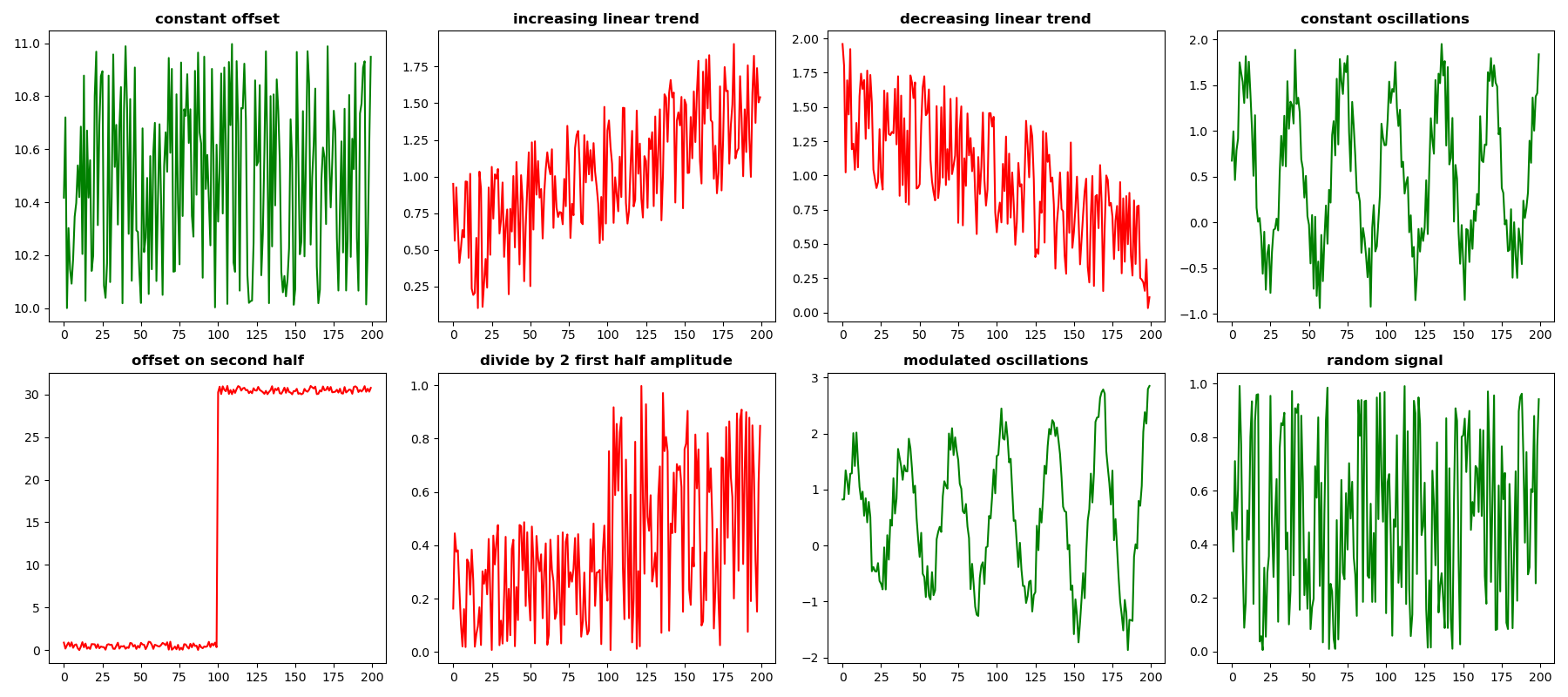Note
Click here to download the full example code
Identify stationary time-series using unit root test¶
This example illustrates how to identify stationary time-series (i.e. time-series with constant statistical properties such as mean, variance etc.). Here, we are going to use the Augmented Dickey-Fuller test.
import numpy as np
from tensorpac.stats import test_stationarity
import matplotlib.pyplot as plt
Define a random dataset¶
Let first create a random dataset and change temporal properties
n_epochs = 8 # number of epochs
n_times = 200 # number of time points
sf = 128.
# create a reproducable random dataset
rng = np.random.RandomState(1)
data = rng.rand(n_epochs, n_times)
time = np.arange(n_times) / sf
# if we run the test on this random dataset, every epochs are going to be found
# as stationary as statistical properties are constant across time. Hence, we
# can introduce some randomness into this dataset to illustrate the sensibility
# of the test
titles = {0: "constant offset", 1: "increasing linear trend",
2: "decreasing linear trend", 3: "constant oscillations",
4: "offset on second half", 5: "divide by 2 first half amplitude",
6: "modulated oscillations", 7: "random signal"}
# Epoch 0 : constant offset
data[0, :] += 10.
data[1, :] += np.linspace(0, 1, n_times)
data[2, :] += np.linspace(1, 0, n_times)
data[3, :] += np.sin(2 * np.pi * 4 * time)
data[4, 100:] += 30.
data[5, 0:100] /= 2
data[6, :] += np.sin(2 * np.pi * 4 * time) * np.linspace(1, 2, n_times)
Compute the statistical test¶
now, run the Augmented Dickey-Fuller test in order to identify which trials are statisticaly considered as stationary
df = test_stationarity(data, p=0.05)
print(df)
Out:
Epochs ... CV (1%)
0 epoch 0 ... -3.463815
1 epoch 1 ... -3.465244
2 epoch 2 ... -3.466005
3 epoch 3 ... -3.466398
4 epoch 4 ... -3.463645
5 epoch 5 ... -3.465059
6 epoch 6 ... -3.466398
7 epoch 7 ... -3.463645
[8 rows x 6 columns]
Plot each trial¶
finally, plot color-coded time-series (green : stationary, red: non-stationary)
colors = {True: 'green', False: 'red'}
is_stationary = df["Stationary"]
plt.figure(figsize=(18, 8))
for k in range(n_epochs):
plt.subplot(2, 4, k + 1)
plt.plot(data[k, :], color=colors[is_stationary[k]])
plt.title(titles[k], fontweight='bold')
plt.tight_layout()
plt.show()

Total running time of the script: ( 0 minutes 1.650 seconds)
